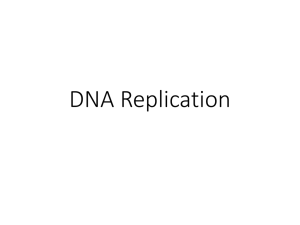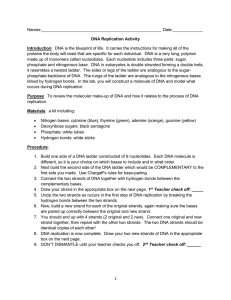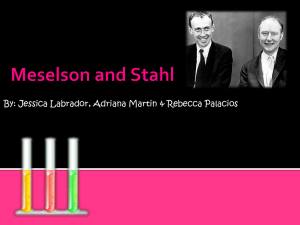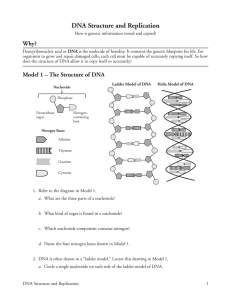Biology Quiz Topics: DNA Structure & Replication Be able to
advertisement
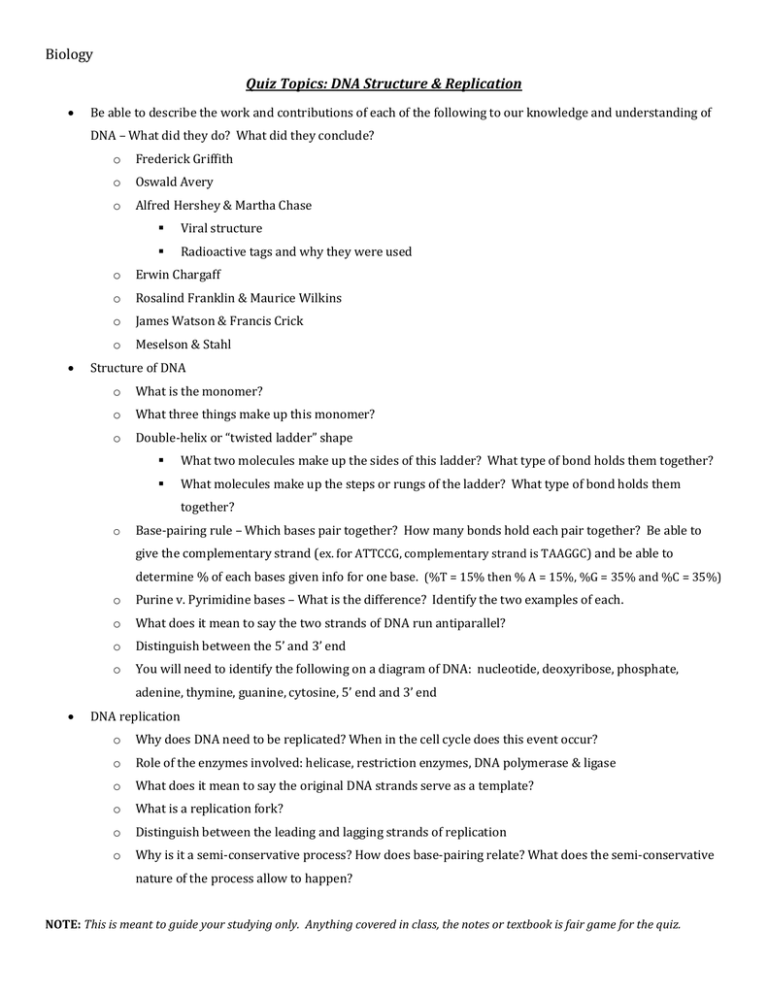
Biology Quiz Topics: DNA Structure & Replication Be able to describe the work and contributions of each of the following to our knowledge and understanding of DNA – What did they do? What did they conclude? o Frederick Griffith o Oswald Avery o Alfred Hershey & Martha Chase Viral structure Radioactive tags and why they were used o Erwin Chargaff o Rosalind Franklin & Maurice Wilkins o James Watson & Francis Crick o Meselson & Stahl Structure of DNA o What is the monomer? o What three things make up this monomer? o Double-helix or “twisted ladder” shape What two molecules make up the sides of this ladder? What type of bond holds them together? What molecules make up the steps or rungs of the ladder? What type of bond holds them together? o Base-pairing rule – Which bases pair together? How many bonds hold each pair together? Be able to give the complementary strand (ex. for ATTCCG, complementary strand is TAAGGC) and be able to determine % of each bases given info for one base. (%T = 15% then % A = 15%, %G = 35% and %C = 35%) o Purine v. Pyrimidine bases – What is the difference? Identify the two examples of each. o What does it mean to say the two strands of DNA run antiparallel? o Distinguish between the 5’ and 3’ end o You will need to identify the following on a diagram of DNA: nucleotide, deoxyribose, phosphate, adenine, thymine, guanine, cytosine, 5’ end and 3’ end DNA replication o Why does DNA need to be replicated? When in the cell cycle does this event occur? o Role of the enzymes involved: helicase, restriction enzymes, DNA polymerase & ligase o What does it mean to say the original DNA strands serve as a template? o What is a replication fork? o Distinguish between the leading and lagging strands of replication o Why is it a semi-conservative process? How does base-pairing relate? What does the semi-conservative nature of the process allow to happen? NOTE: This is meant to guide your studying only. Anything covered in class, the notes or textbook is fair game for the quiz.






